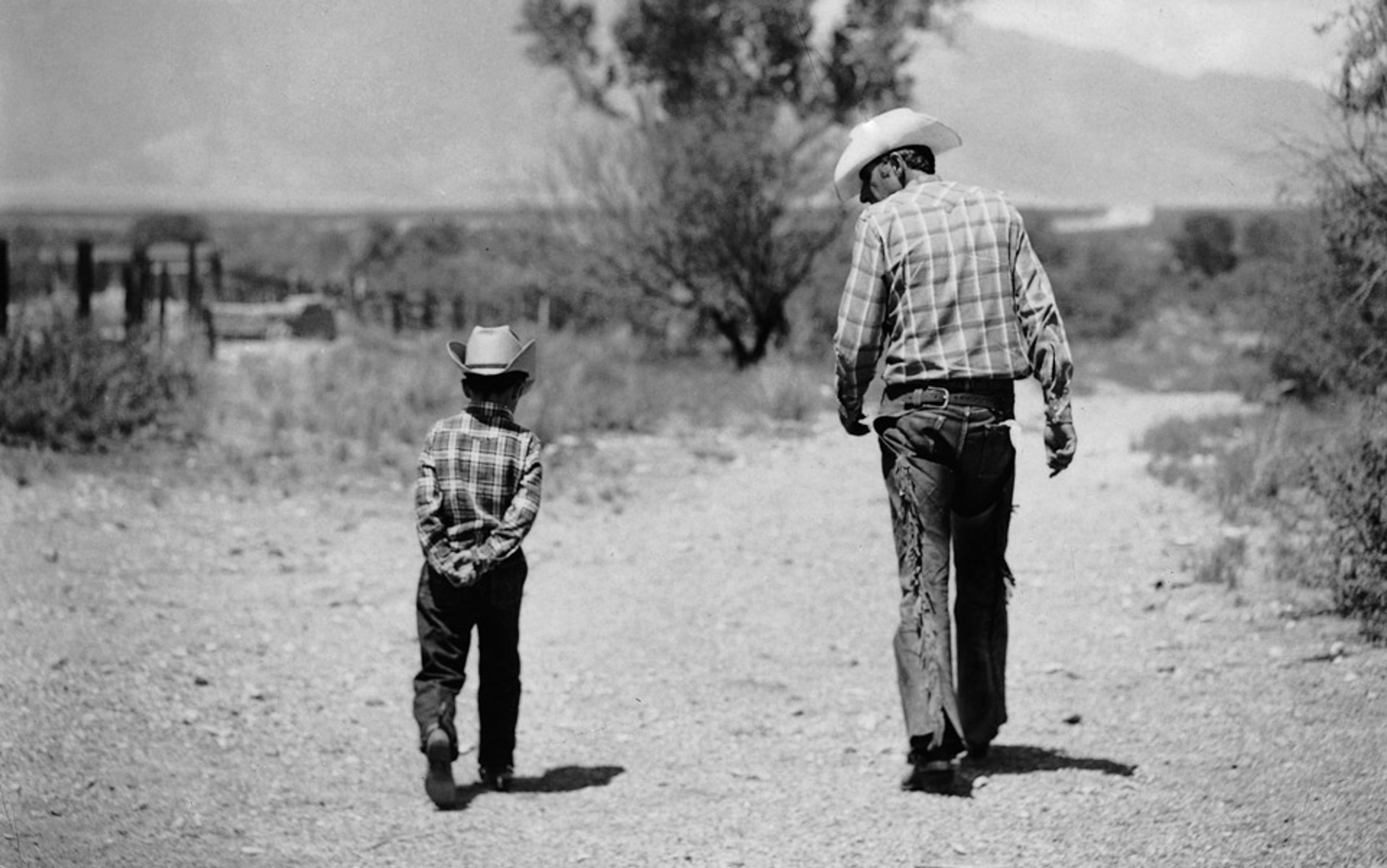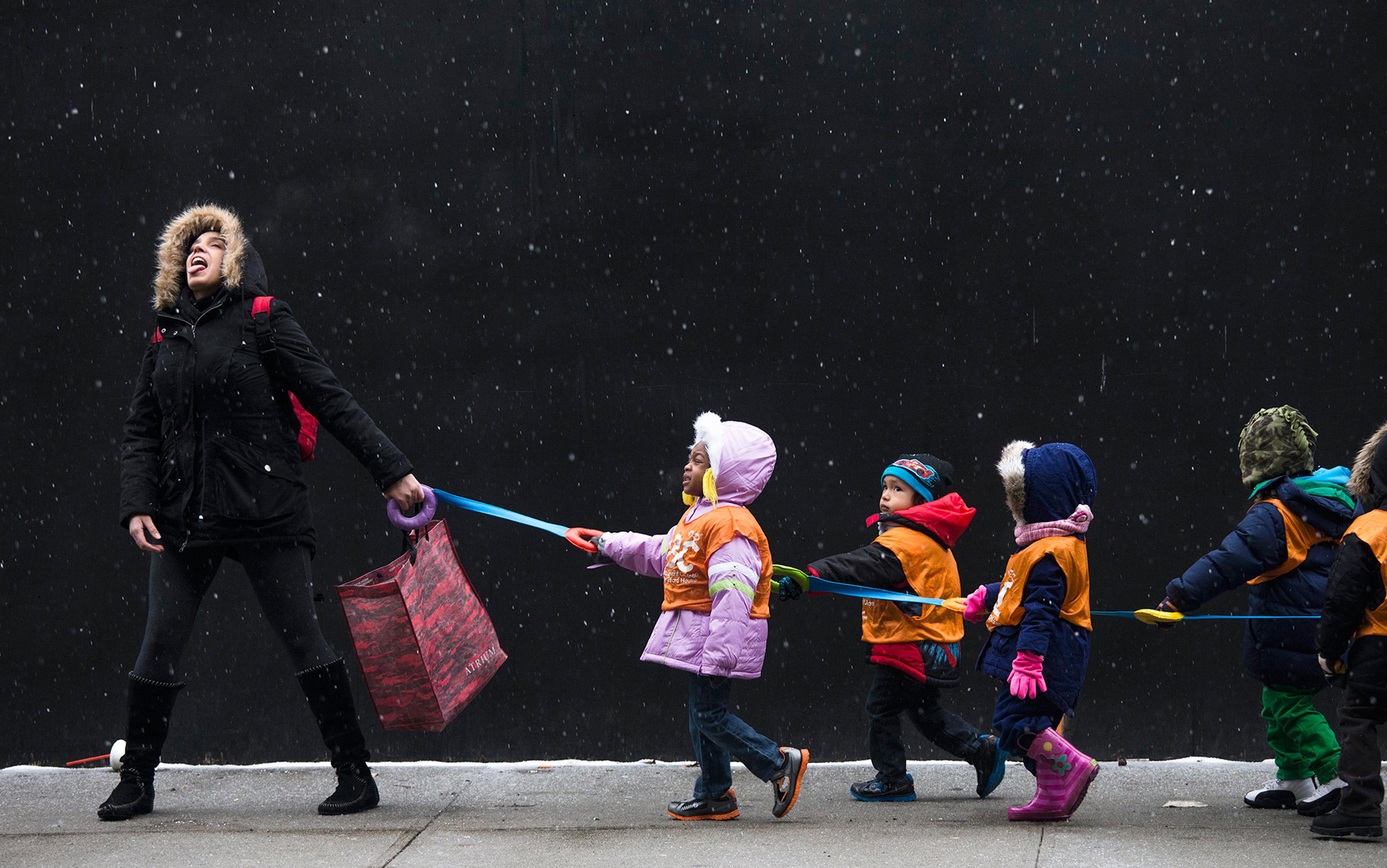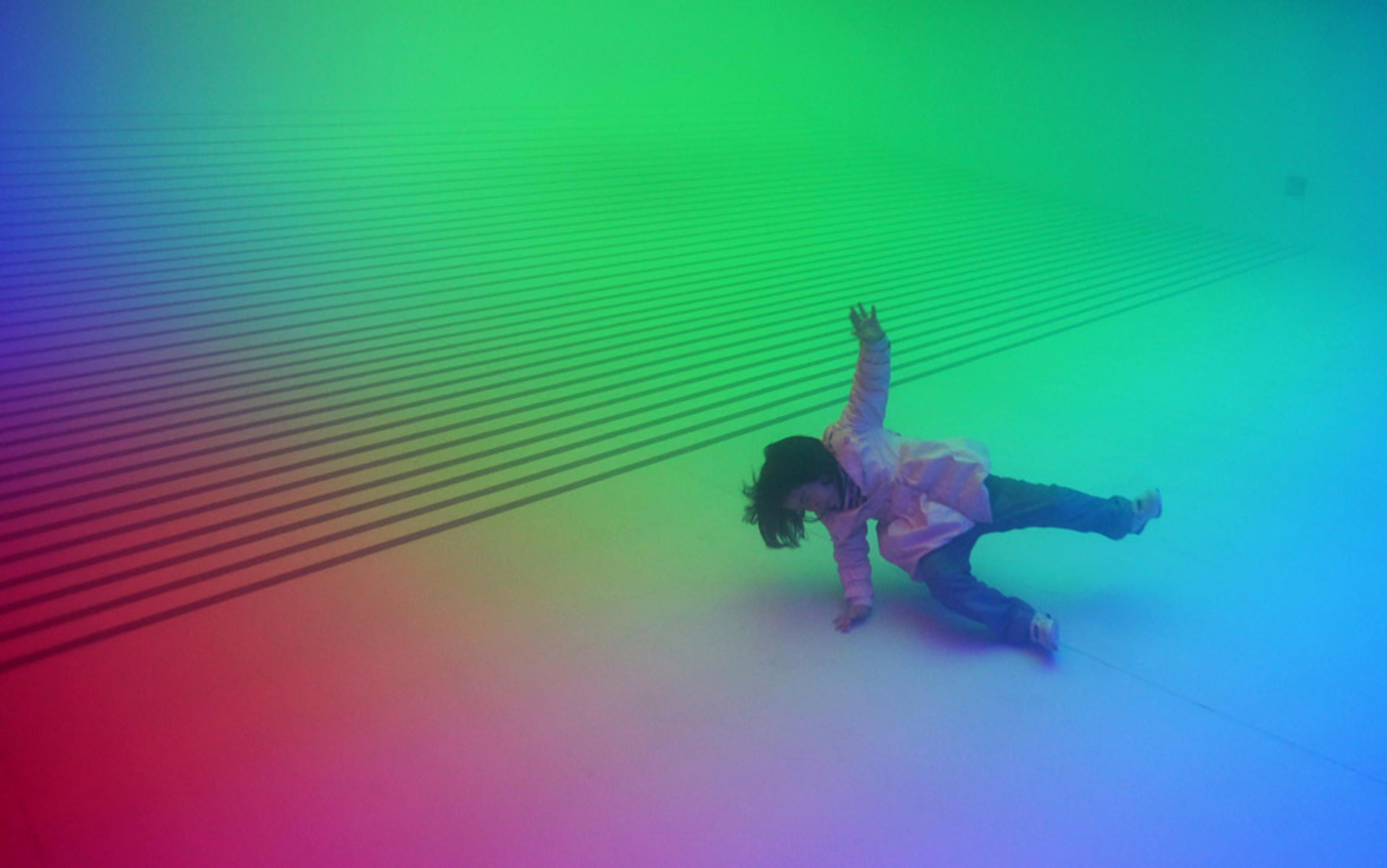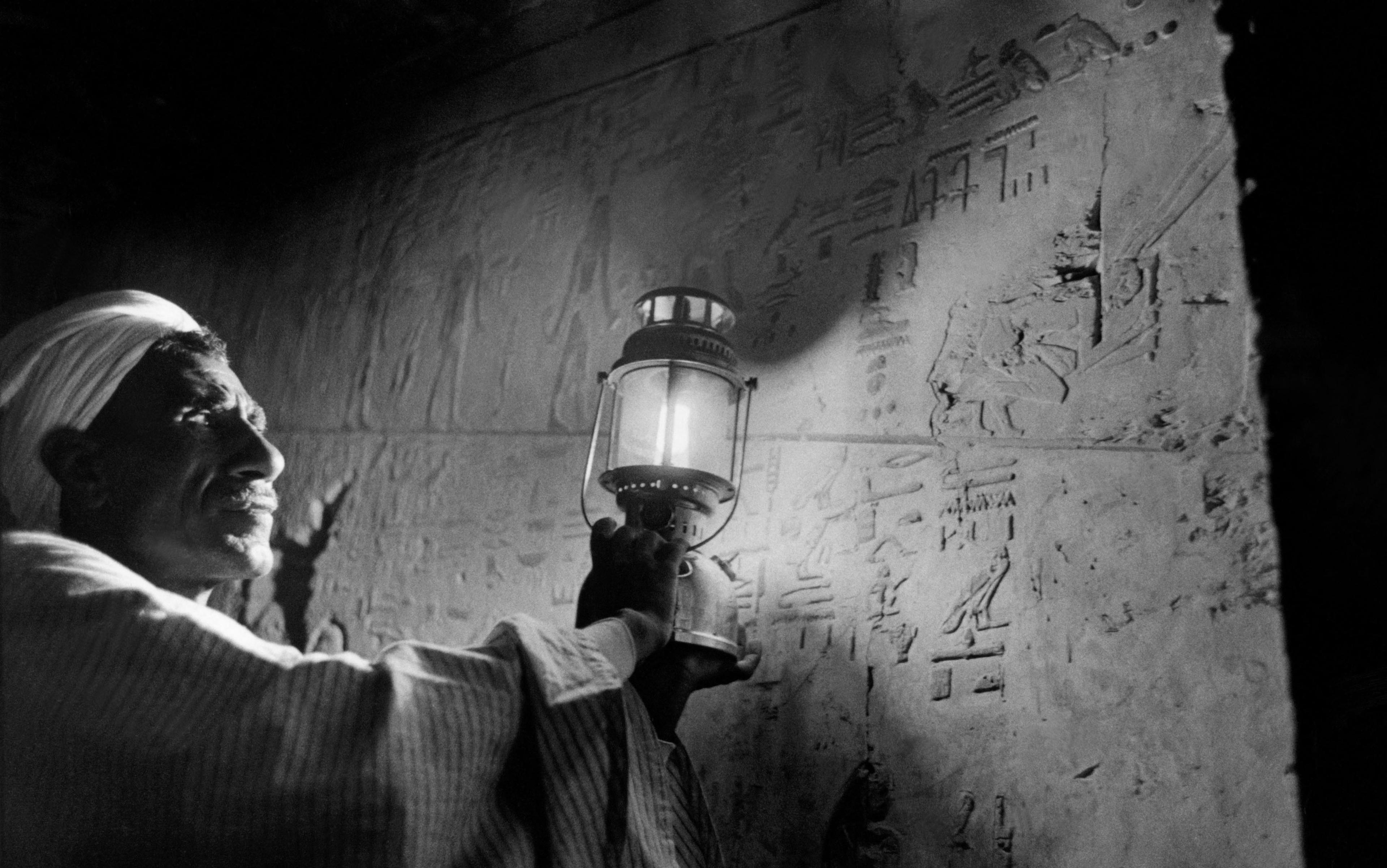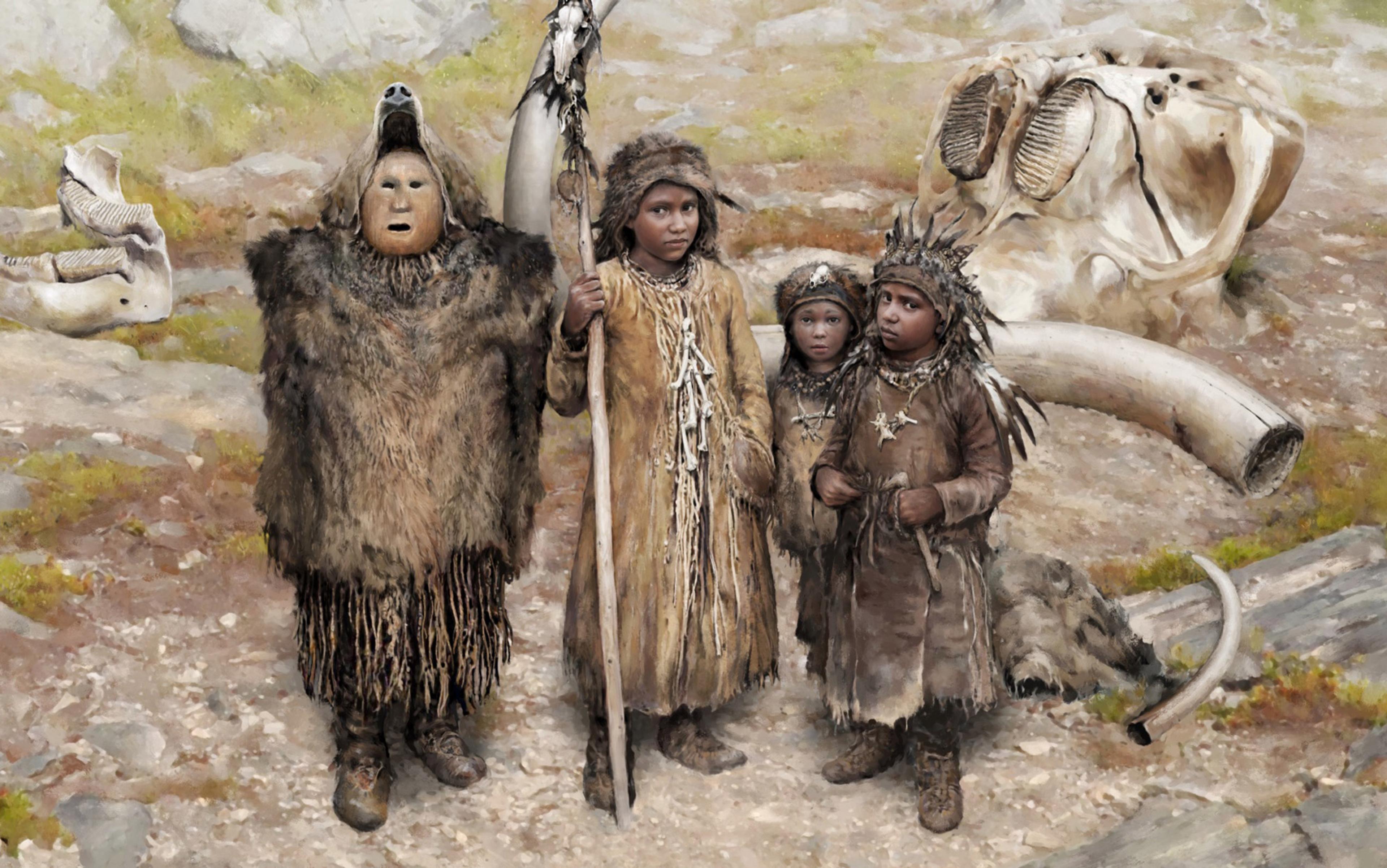You can’t speak like they spoke. You can’t farm like they farmed. You can’t dance, or heal wounds, or greet people like they did. In fact, most of the cultural practices your distant ancestors learned have not reached you. They were lost somewhere along the way – failed transmissions that never crossed the generational chains of knowledge that connect us to our past. Those chains, it turns out, can be incredibly brittle. Without physical records, cultural knowledge can easily break down and disappear.
Think of the music of Mesopotamia, from around 2000 BCE. The only reason we can still attempt to play it today is because ancient Sumerians inscribed the notation for their songs into stone tablets. Think of the hunting techniques of our Palaeolithic ancestors. The only reason we have an idea about what these techniques involved is because we unearthed their carved weapons and tools. Museums are filled with these enduring messages about past cultural practices, coded into artefacts and ruins, or written onto parchment, papyrus and other kinds of media.
These messages can leave us lamenting the uncountable broken chains that separate us from the past: what might we know if more had been recorded? Surely, if our ancestors had just given us written instructions on how to speak, farm, cook, dance, and make music, we could have also learned and transmitted that knowledge. And imagine if they had the recording devices we have today. With a smartphone, they might have recorded the mundane details of their lives, describing their skills in a way that could be easily mastered and shared. The problem, however, is that culture doesn’t always work that way. Not everything can be put into words. Who hasn’t been frustrated when confronted with recipes instructing you to ‘cook until done’, ‘simmer until thickened’ or any other equally ambiguous instruction? And who hasn’t been frustrated when trying to imitate someone demonstrating a skill that requires some previous experience, some tacit knowledge? Not everything can be understood simply by watching someone else do it. Some cultural practices can be learned only by doing. They must be felt.
This is what makes cultural chains so brittle. It is why instrument makers in Europe can no longer produce violins like Antonio Stradivarius despite having closely studied the instruments he made, why builders can no longer replicate the stone-fitting techniques of the Inca despite having the necessary tools, and why perfume makers can no longer produce ancient perfumes, despite having the recipes. It is also why I, a French cognitive scientist in my early 30s, am unable to do many of the things that my ancestors once did, including illuminating manuscripts with immaculate handwriting, preparing herbal remedies, hunting with a bow, or making flint tools.
Though our collective forgetting is enormous, it is mostly unremarkable to those who study the transmission of culture. What puzzles me, and others who study transmission, is why so much unwritten knowledge has survived. Despite the brittleness of cultural practices, skills proliferate with and without records, chaining generation to generation, and binding us to our ancestors in deep time. So how do these practices persist if the paths of transmission are so brittle? How has anything at all been transmitted without physical records?
Answering these questions will help us understand how much of our current culture could be transmitted to the future. Though we are living in a time in which cultural knowledge is being recorded and stored at a higher rate than ever before, there is no guarantee this information will be effectively transmitted. Optimising cultural transmission, I believe, involves more than new technologies, massive digital repositories and artificial intelligences. It involves learning how knowledge is archived in human bodies.
Though culture can be brittle, it is often imagined in ways that make it appear solid and enduring. It is portrayed as an expansive sea, an iceberg, a solid ratchet. When imagined as a kind of sea, culture appears everywhere, surrounding us. In the 1960s, the media theorist Marshall McLuhan portrayed culture as a vast and all-encompassing medium. In such a ‘sea’, we can absorb information and practices by osmosis, even unknowingly. In the 1970s, the anthropologist Edward T Hall suggested that culture was more like an iceberg: we can see only a small portion of it, the deeper parts lie hidden. And in the 1990s, the psychologist Michael Tomasello explained the ‘cultural ratchet effect’ in which human learning accumulates over time, like a metal ratchet that moves forward only as we build on knowledge from the past. Imagined in these disparate ways, culture appears as something solid and enduring that moves forward and expands. What is a spacecraft, Stanley Kubrick speculated in 2001: A Space Odyssey (1968), but the distant outcome of the first tools used by our hominin ancestors?
A less stable view of culture begins to emerge when we consider some of the problems that bedevil archaeologists and anthropologists. Though they can look at rediscovered Mesopotamian bread moulds or ancient Egyptian dancing wands or Chinese oracle bones, they can’t bake Mesopotamian bread or dance like ancient Egyptians or consult the Chinese oracle. The knowledge possessed by the people who used these items is gone, most likely forever. And this loss isn’t simply because the relevant knowledge wasn’t written down. These and other findings represent forms of culture that likely can’t be recorded.
Though practised for millions of years, stone-knapping remains a remarkably difficult skill to learn
Around the world, teams of researchers have been engaging with these forms of culture by attempting to learn the methods that people once used to make craft objects. Their work shows just how difficult the task of recreating cultural practices can be. The Making and Knowing Project at Columbia University in New York City has attempted to recreate the techniques described in an anonymous 16th-century French manuscript, catalogued as ‘Ms. Fr. 640’. Between 2014 and 2020, the team tackled techniques described in the manuscript, including mouldmaking and metalworking, colour making, optics and mechanics, ephemeral art, printmaking, inscriptions, and impressions. At the Stone Age Institute, an independent research centre in Indiana, a team is trying to understand stone-knapping techniques used to produce hunting technologies such as arrowheads and spear tips. Though practised for millions of years, stone-knapping remains a remarkably difficult skill to learn, requiring extensive training.

The Making and Knowing Project at Columbia University in New York City has attempted to recreate techniques described in an anonymous 16th-century French manuscript, catalogued as ‘Ms. Fr. 640’. Courtesy the BnF, Paris
Recognising how difficult it is to transmit cultural practices, UNESCO has been working to preserve ‘intangible cultural heritage’, which includes many traditions that might become extinct as the last remaining practitioners die. Languages also fall within this category: around 3,000 remain endangered. Some, like Aka-Cari spoken in the Andaman Islands, India, have gone extinct only recently. The last living native speaker, named Licho, died on 4 April 2020. But what about cultural practices that are less connected to reading, writing and speaking? What about forms of knowledge that are more tacit and embodied?
Cultural transmission is a term used by researchers to describe the process through which certain forms of knowledge are passed between people. When this knowledge is exchanged, even through passive observation, a ‘transmission event’ has occurred and another link is made in the chain. To understand this process in action, think of something you know how to do but would struggle to explain to someone else. Perhaps it is a specific movement in a sport you play, or a craft technique, or a social skill like knowing the right way to greet another person.
Now, try to think about how long this cultural practice has been around. Think about how many transmission events might link its first occurrence to the moment when you first learned how to do it. How many generations have passed since the practice started? How many people had to learn it, and learn it well enough to pass it on to the next person, for the chain to keep extending? In some cases, the chain of knowledge might be incredibly long – so long that thinking about the sequence of transmission events might induce vertigo. This extended sequence can also make the chain appear incredibly delicate. It could have broken at any one of its many transmission events. This is what makes knowledge chains paradoxical for researchers: if they are so brittle, how have so many forms of cultural knowledge survived?
Some solutions to this problem have been elegantly synthesised in How Traditions Live and Die (2015) by Olivier Morin, an expert in cultural evolution. Morin argues that surviving cultural practices were never that brittle to begin with because they have one or both of the following features: redundancy and repetition. Both ensure that if a transmission event doesn’t occur (or fails), another transmission is still possible. Redundancy ensures that a person can learn something from multiple people in different contexts. Your aunt, for example, might pass on some of the knitting and tailoring skills your grandmother failed to teach you. Repetition, on the other hand, ensures that even if one transmission fails, other events will help you learn the things you missed. For example, you might not have fully acquired your grandmother’s knitting skills on the first try, but you master them as she demonstrates and teaches them to you over and over.
Is it how hard the master blows, or the way they move the molten glass, or something you can’t even see?
An alternative way of explaining the paradox between brittle transmission chains and the ubiquity of surviving cultural knowledge involves focusing on how knowledge is stored, not just transmitted. Cultural knowledge is held not only in records written on stone tablets, papyrus or other media. It also exists in bodies and nervous systems. At first glance, this may appear to make things more challenging for cultural transmission, since this kind of knowledge typically requires learning how a practice feels, which can’t be conveyed through words alone. This is tacit knowledge, or, as the polymath Michael Polanyi describes it, what we know but cannot say.
Neither imitation nor language are much help when it comes to learning this kind of knowledge. For it to be transmitted, you can’t simply watch someone, or read some instructions. Language is perfectly suited to convey all kinds of cultural things that are mainly language to start with, such as stories, but many things need to be experienced firsthand. And what about imitation? Though it can be helpful to learn by watching someone else doing something, the same rule applies: ultimately, you need to do it yourself.
Suppose that you’re watching a master glassblower in order to learn how to make a hand-blown cup. What should you pay attention to for you to be able to make a cup using the same technique? Is it how hard the master blows, or how they position their feet, or their hands, or the way they move the molten glass, or something you can’t even see, or all of the above? The gap between seeing someone do something skilfully and performing it yourself is often enormous. To reduce this gap, you would first need to have enough knowledge to know what part of the action to observe exactly. You would already need to know what to pay attention to. Then you would face another, even harder problem: how should you use what you can see (such as the molten glass’s appearance) to infer things you cannot see (such as its temperature, or how hard the glassblower is blowing).
Furthermore, the correct action in each situation depends on the context, and this is an important part of transmission, too. In football, for example, a skilful player’s moves will depend on the position and velocity of the ball, of their teammates and of their opponents. You could write 10,000 words about how a goal was scored and still not convey enough information for someone to replicate the kick. So how do we successfully transmit ‘what we know but cannot say’ through our bodies, especially when they are physically limited in so many ways?
Think about an embodied or tacit form of cultural knowledge you are familiar with, such as knowing how to make the right facial expression to communicate an emotion, knowing how to ride a horse or make a tennis serve, or knowing how to hold your cup correctly during a Japanese tea ceremony. Now try to break down this practice into bits. In the case of riding horses – a cultural practice that has been around since 3500 BCE – relevant bits might include things such as the location of your hands, the angle between your elbow and your wrist, or the position of your back and the distribution of your weight on the horse’s back.
Now, consider how these different bits relate to one another. As Simon DeDeo and I showed in our article ‘The Cultural Transmission of Tacit Knowledge’ (2022), a crucial feature of these relationships is constraint: each separate movement or position is limited by our physical bodies and abilities. Embodied knowledge is strongly constrained. Not all combinations of states for the different bits are possible because there are always physical and anatomical boundaries to what you can and can’t do in any given moment. While riding a horse, for example, if your posture is very straight or you are leaning back slightly, your hands can be only in a limited range of positions; for example, your arms will likely not be long enough to rest high on the horse’s neck. And if your body position changes, and your hands go up, the angle formed by your elbow will shift. Embodied cultural practices always involve physical constraints.
In other words, you can start to think of embodied cultural knowledge as a network of interacting bits that influence one another. Not all bits are necessarily influencing one another in all cases. The position of your hands on the reins may not be related to how hard you are gripping. This is important because it suggests that embodied forms of cultural knowledge might not be as difficult to transmit as we assume. They don’t need to be fully explained because our bodies are constrained.
Imagine each bit in the network like a switch that can be turned on and off. When one turns ‘on’ (say, your hands are high on the horse’s neck), others will also turn ‘on’ (your back will be angled forward) because they are connected. In other words, you need only to fix a few bits to determine the state of every other bit in the network. So, if a learner focuses only on mastering those particular traits that matter to a practice, everything else may suddenly click into place more easily. This echoes something else we observe in real life: experts sharing their embodied knowledge need only home in on those few key bits that are essential. For a learner, the interactions between the bits, as determined by the network, will then influence the remaining bits, ideally creating a cultural practice that is close to that of their teachers. This means we don’t need to know everything to learn new embodied knowledge. We need only some of the bits to have a whole, ‘correct’ practice.
Sometimes, changing a tool can shift the network of ‘bits’, facilitating entirely different movement
For teachers, the skill of sharing knowledge involves knowing which bits to focus on. In his description of the pedagogical practices used by capoeira teachers, the neuroanthropologist Greg Downey describes their use of ‘reducing degrees of freedom’. These teachers can create exercises that, Downey explains, ‘place a student’s body into particular starting positions, force them to go only one direction, or otherwise eliminate options for motion’. Such restrictions involve fixing certain bits, at least temporarily, so that other bits will ‘click’ into place, which allows students to feel what it is like to perform a given movement correctly.
To help reveal the network of bits to new learners, and to generate a transmission event, teachers commonly use metaphors as short-cuts: ‘follow through’ in tennis; ‘move your whole weight’ in salsa dancing; ‘throw your elbow, not your fist’ in boxing. None of these metaphors make literal sense. ‘Following through’ has no impact on the trajectory of the ball in tennis, since the ball has already left the racquet; ‘moving your whole weight’ happens naturally in salsa with each movement you make; and your fist, not your elbow, is what hits when boxing. However, these instructions are still helpful because they allow learners to fix some parts of their movements. By telling you to ‘throw your elbow’ when throwing a hook, a boxing coach is helping you align your wrist and your elbow, ensuring your body rotates properly and that you are generating a powerful punch. Good teaching often requires metaphors or creative exercises that go beyond the practice itself.
Sometimes, teachers may engineer constraints or use metaphors, but artefacts and materials might also exploit the networked relationships between ‘bits’ to transmit cultural practices. These artefacts are usually designed to fulfil a specific function or enable a specific use. Scissors, for instance, are easy to use if you’re right-handed and much more difficult if you try to use them with your left hand. More specialised tools and objects act in the same way. When horse-riding, a dressage saddle, for example, allows for specific positions of the pelvis and legs that are different from those allowed by a jumping saddle – sometimes, changing a tool can shift the network of ‘bits’, facilitating entirely different movement. Materials, like different kinds of wood, earth or stone, also make different actions possible and can help ‘fix’ some part of the network. Think of the early stone knives and arrowheads that our distant ancestors made from flint and obsidian. These minerals were chosen because they could be reliably worked into sharp edges and points.
Seeing cultural knowledge as a network of bits that can switch each other on and off means that successful cultural transmission can be achieved even when transmitting only relatively little information. In such cases, transmission exploits how movements are constrained. The unexpected outcome of this is that there can be many ways of doing something, and some learners may even develop unique versions of practices. In the history of sports, this has happened many times, where examples of unusual or unorthodox techniques abound. Take Sadaharu Oh’s distinctive ‘flamingo’ leg kick in baseball, or Donald ‘the Don’ Bradman’s batting technique (and exaggerated follow-through) in cricket. They show that new variants can still be effective, even if they don’t become the dominant style.
Sadaharu Oh’s ‘flamingo’ leg kick in baseball
Donald ‘the Don’ Bradman’s batting technique in cricket
However, in some cases, unusual techniques become innovations that alter future transmissions. One example, again in the domain of sports, is Dick Fosbury’s backwards flop in high jump. After this new technique helped him win gold at the 1968 Olympic Games in Mexico City, the Fosbury Flop became popular among high-jumpers, who until then prefered techniques that allowed them to land on their feet.
Dick Fosbury’s backwards flop in high jump
Understanding how cultural transmission exploits relationships in a network of ‘bits’ doesn’t only help with the preservation of current knowledge. It can also give us an insight into new cultural practices that might be discovered in the future.
In our age of information, more cultural practices than ever are being recorded. As server farms bulge with data and archives swell with books and artefacts, it may seem obvious that our knowledge will be preserved and passed down. But putting our faith in this mountain of data may be a mistake. It is a misunderstanding of the embodied nature of many cultural practices, a misunderstanding of how our ancestors were able to successfully pass practices from generation to generation, despite the inherent brittleness of long cultural chains.
Much of our cultural knowledge simply can’t be put into words or recorded. It can, however, be stored in the constrained movements of our bodies. Optimising the transmission of a cultural practice doesn’t always require a larger amount of information. It can be achieved by leveraging how some bits influence others in a network, by learning how some objects and materials exploit those networks, and by understanding how teachers use pedagogical techniques.
It is hard to say what forms of culture will exist in another 1,000 or 10,000 years. But if tacit knowledge is still around, then it will likely have been transmitted from body to body, by exploiting our physical constraints. This is how ‘what we know but cannot say’ might someday link our age with the cultures of the deep future.
Published in association with the Santa Fe Institute, an Aeon Strategic Partner.


